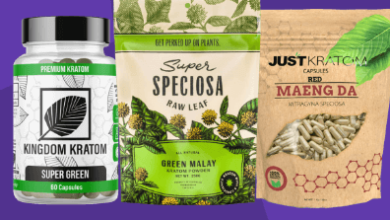Is Kava and Kratom Safe? What The Science Says

Kava and kratom have been in the news lately for all the wrong reasons. With reports of kava users developing liver toxicity and kratom users experiencing seizures, it’s important to know whether or not these supplements are safe. In this blog post, we willp discuss the science behind both kava and kratom to see if they are truly safe or if they should be avoided at all costs.
What is Kava?
Kava (Piper methysticum) is a plant from the pepper family that has been used as a drink and food in the Pacific Islands for centuries. It contains kavalactones, which are compounds that can cause feelings of euphoria and relaxation. Kava has been reported to be safe when taken in small amounts, but it can also have side effects such as drowsiness and nausea. Kratom (Mitragyna speciosa), on the other hand, is an Indonesian tree that is typically used as a stimulant or pain reliever. It contains various alkaloids, some of which have psychoactive effects similar to those of opium. Kratom has not been formally studied for safety and could potentially have adverse effects if abused.
What is Kratom?
Kratom (Mitragyna Speciosa) is a tropical tree in the coffee family that is native to Southeast Asia. The leaves and flowers of the tree are used for their botanical properties, which include stimulant, sedative, and analgesic effects. Kratom has been used for centuries in Thailand as a traditional medicine. In recent years, kratom has become popular as a recreational drug due to its psychoactive effects.
What are the psychoactive effects of kratom?
The psychoactive effects of kratom depend on the dose taken and can include mild stimulant effects, euphoria, increased energy, and feelings of relaxation. At higher doses, kratom can produce strong psychoactive effects including sedation, intoxication, and hallucinations. There have been reports of people abusing kratom to get high.
What are the Effects of Kava and Kratom?
Kava&kratom are both plants from the Piperaceae family. Kava is typically consumed as a beverage or in food, while kratom has been used for centuries in Southeast Asia as a stimulant and pain reliever. Both plants have been shown to have some effects on anxiety, mood, and addiction, but their effects on physical health are largely unknown.
Both kava&kratom have been shown to have anxiolytic (anxiety-relieving) effects in human studies. In one study, participants who took kava showed less anxiety than those who took placebo capsules. Additionally, kava has been reported to improve mood in people with depression, and it may also be helpful in reducing withdrawal symptoms associated with drug abuse. However, there is limited evidence that kava or kratom can actually treat physical health conditions such as chronic pain or cancer.
Is Kava and Kratom Safe?
Kava & kratom are both plants from the Pacific islands that have been used in traditional medicine for centuries. Kava is a plant that is used to relax muscles and stimulate circulation, while kratom is used as an opioid substitute and stimulant. There has been some research on the safety of both plants, but it is still not clear whether they are safe or harmful.
The main concerns with kava&kratom are addiction and toxicity. Both plants can be addictive, and there have been reports of people developing an addiction to both kava & kratom. Kava also appears to be toxic in high doses, potentially leading to liver damage. However, the science on the safety of these plants is still unclear, so it is difficult to make a clear judgement on their safety.
Conclusion
Kava and kratom have been consumed for centuries in both the Western and Eastern worlds for their energetic, calming, and pain relieving properties. Although there is limited scientific research on these supplements, the available data suggests that they are safe to consume when used as directed. If you are considering incorporating either kava or kratom into your diet, it is important to do your research first so that you can make an informed decision.




